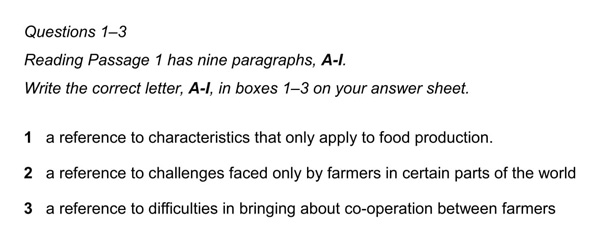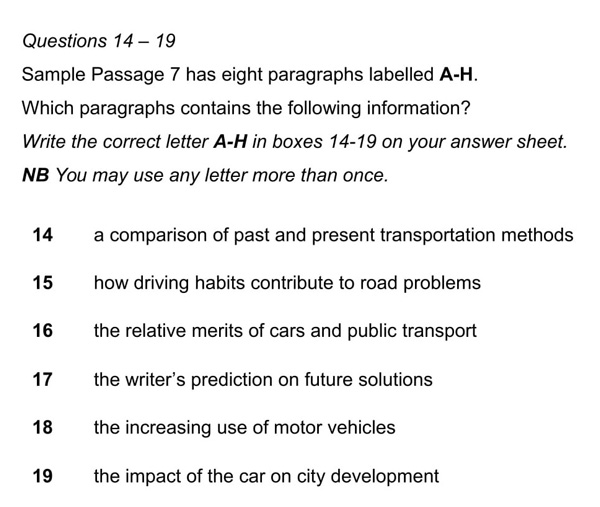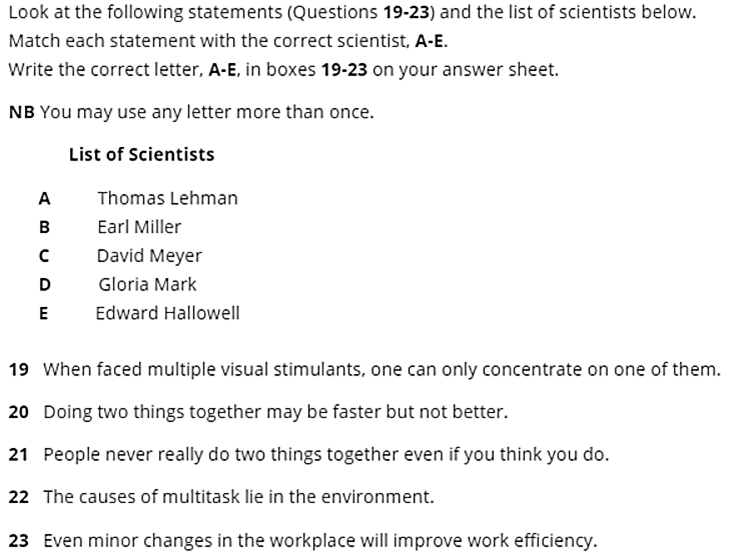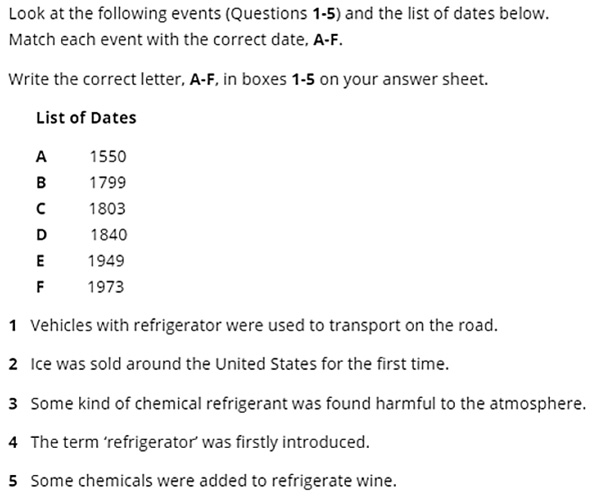Matching Information Questions: Strategies for IELTS Reading
The Matching Information Questions task is notoriously difficult in the IELTS Reading test because it requires you to locate specific details embedded anywhere in the text. Unlike other question types, the answers do not appear in sequence. Whether the information is a reason, a definition, or a specific fact, your ability to scan efficiently is the key to success.
At IELTS-TestPro, we have developed a systematic approach to help you conquer this challenge. This guide will walk you through the essential strategies to locate information accurately and quickly.
I. Introduction to Matching Information Questions in IELTS Reading
A list of about 3 to 6 statements or information will be manifested in the instructions of the Matching Information Questions, right before the reading passage. Notwithstanding the reasons, definitions, explanations, opinions, summaries, descriptions, or facts that can be the content for the statements, you are supposed to test your Reading skills and your answers will be in the reading passage only.
You are required to match each statement to the appropriate paragraph in the reading text or information in the given box. The paragraphs or information will be labelled in letters A, B, C, D, etc., so you should write down your answers according to the letter of the information or paragraph instead of words or phrases. Also, there will commonly be more paragraphs in the reading text or information in the list box than statements.
> >> See more about IELTS Reading Diagram Labelling Questions
Let’s see some examples for Matching Information Questions below:




In fact, scanning and understanding specific information really matters in Matching Information Questions. To be specific, you will be examined:
- scanning technique for specific information
- skimming technique for general meaning of the paragraph
- ability to identify and understand keywords, synonyms and paraphrases
- ability to fully understand the information
Let’s get started with our free IELTS online test to pass your exam
II. IELTS Reading matching information questions strategies
Since this task is time-consuming, do not approach it blindly. Follow these steps to maximize efficiency.

Since this task is time-consuming, do not approach it blindly. Follow these steps to maximize efficiency.
1. Step 1: Analyze the Instructions (The “NB” Rule)
First, check for the note: “NB You may use any letter more than once.”
- Strategy: If this note is present, it is highly likely that one paragraph contains the answers to two questions. If it’s missing, each paragraph usually corresponds to only one statement (or none).
2. Step 2: Decode the Statements
Read the statements before the text. Identify the specific nature of the information required.
- Ask yourself: Is the statement asking for a Reason? A Result? A Definition?
- Highlight Keywords: Underline specific nouns, names, or actions.
- Brainstorm Paraphrases: If the keyword is “cost,” expect to see “price,” “expensive,” or currency symbols ($) in the text.
3. Step 3: Skim the Text for “Landmarks”
Quickly read the topic sentence (first sentence) and concluding sentence of each paragraph.
- Goal: Create a mental map. Label each paragraph mentally (e.g., Paragraph A = Introduction; Paragraph B = Problems; Paragraph C = Solutions).
- IELTS-TestPro Tip: Do not read in detail yet. You are just establishing where information might be.
4. Step 4: Scan for Details (The “Not in Order” Challenge)
Unlike “Sentence Completion,” these questions are not in chronological order.
- Start with the easiest: Look for statements containing proper names, numbers, or dates first. These are “unchangeable” keywords and are easiest to spot.
- Scan for Synonyms: For abstract statements, scan the text for the paraphrases you brainstormed in Step 2.
5. Step 5: Verify and Eliminate
Once you think you have found the paragraph:
- Deep Read: Read the specific sentence(s) carefully to ensure it matches the statement’s meaning exactly.
- Cross-check: Does the paragraph explicitly state the information, or just imply it? It must be explicit.
- Eliminate: Cross out the statement you have solved to narrow down your remaining options.
>>> Practice now: IELTS Reading Practice Test
III. Common problems and mistakes & Tips for matching information questions in IELTS Reading
Many candidates lose points due to panic or poor time management. Here is how to avoid common pitfalls, based on IELTS-TestPro’s analysis.

| Common Problems & Mistakes | Tips |
| 1. The information of Matching Information Questions can be located anywhere in the reading passage and the answers will not come in sequence | Scan for the information in the whole text but based on the keywords or synonyms, paraphrases you have thought of |
| 2. Some candidates look for the main idea of the paragraph on the basis of the first one or two sentences and the last one
The information of statements can be anywhere in the paragraph and you won’t get the answers if you keep skimming quickly. |
It’s recommended to scan for the whole paragraph to locate the information |
| 3. Not all paragraphs include one answer and some paragraphs have more than one matching statement. | Read the instructions carefully and scan for information without leaving out the options of containing more than one statement in a paragraph. Plus, don’t try to find the answer for all paragraphs |
| 4. Looking for the exact same words or phrases of the statements in the reading text
The reading text will not use the exact same words as those in the questions (e.g. They use ‘just over a third‘ or ‘about a third‘ instead of 34%) |
Try to paraphrase keywords in the questions using synonyms or paraphrases so that you can find information in the text more effortlessly |
Other tips for Matching Information Questions in IELTS Reading:
- Do this question type last after getting used to the reading text with other question types and maybe you may save your time for the identified information in advance
- Make use of unchangeable words to scan for the information more quickly such as names, dates, places, numbers, etc.
- Use your time wisely with the easier ones first and skip hesitated questions for later check
Since the Matching Information Questions takes much time for candidates to complete, these strategies and tips can help you with a more speedy and effective process to deal with this question type in IELTS Reading.
Install IELTS Test Pro to apply these strategies, tips, and practice with IELTS Reading Matching Information Questions now!